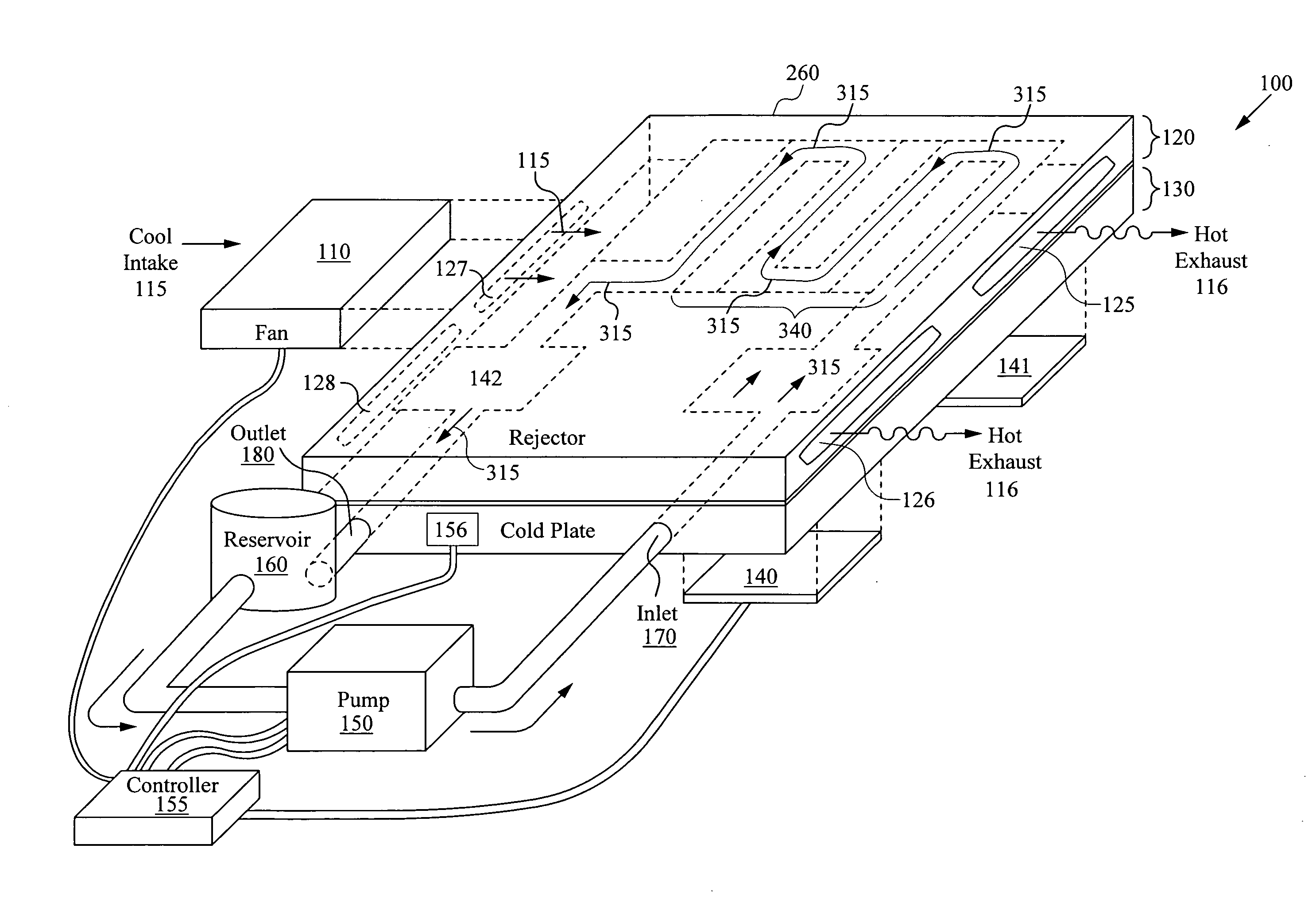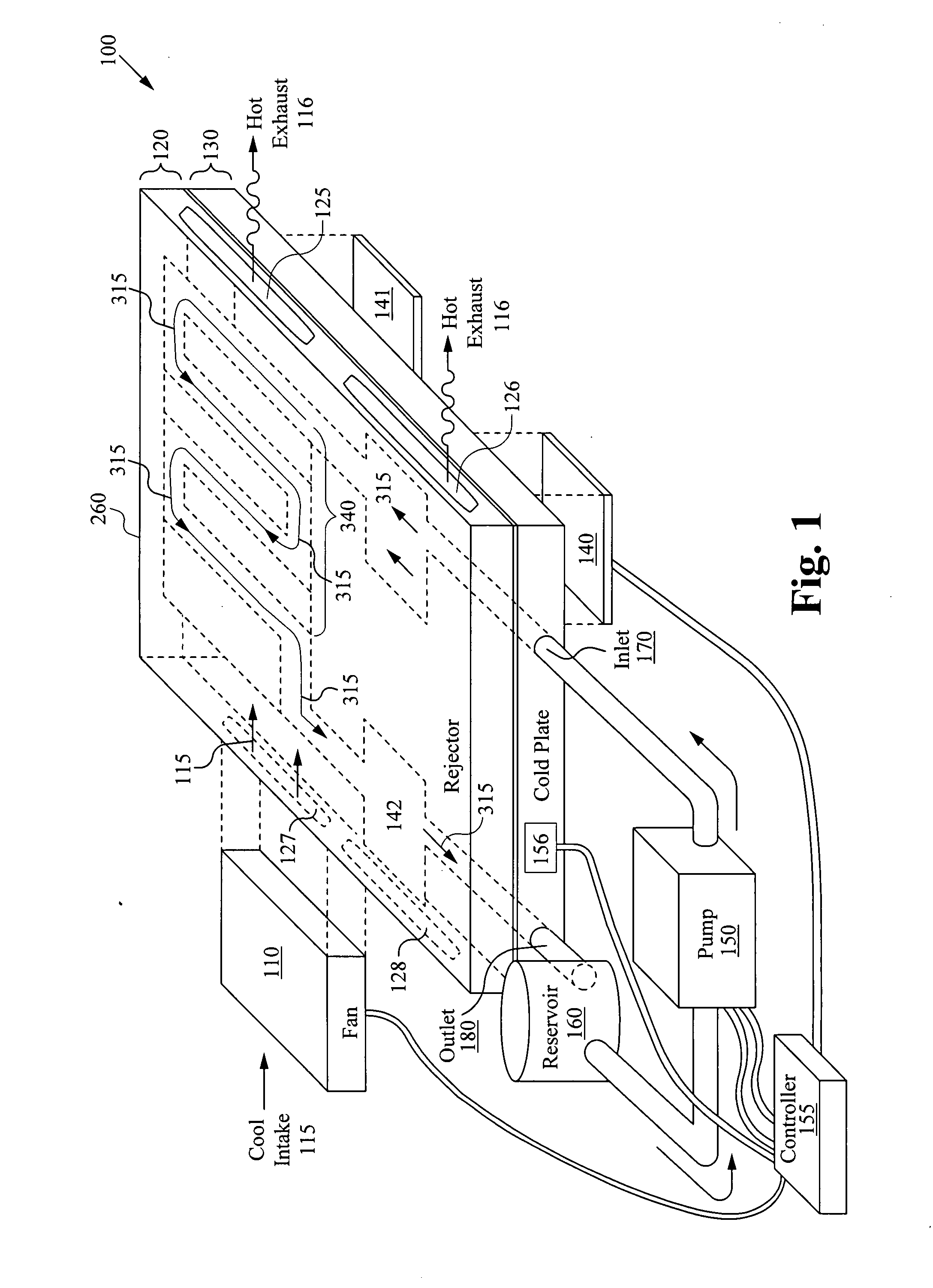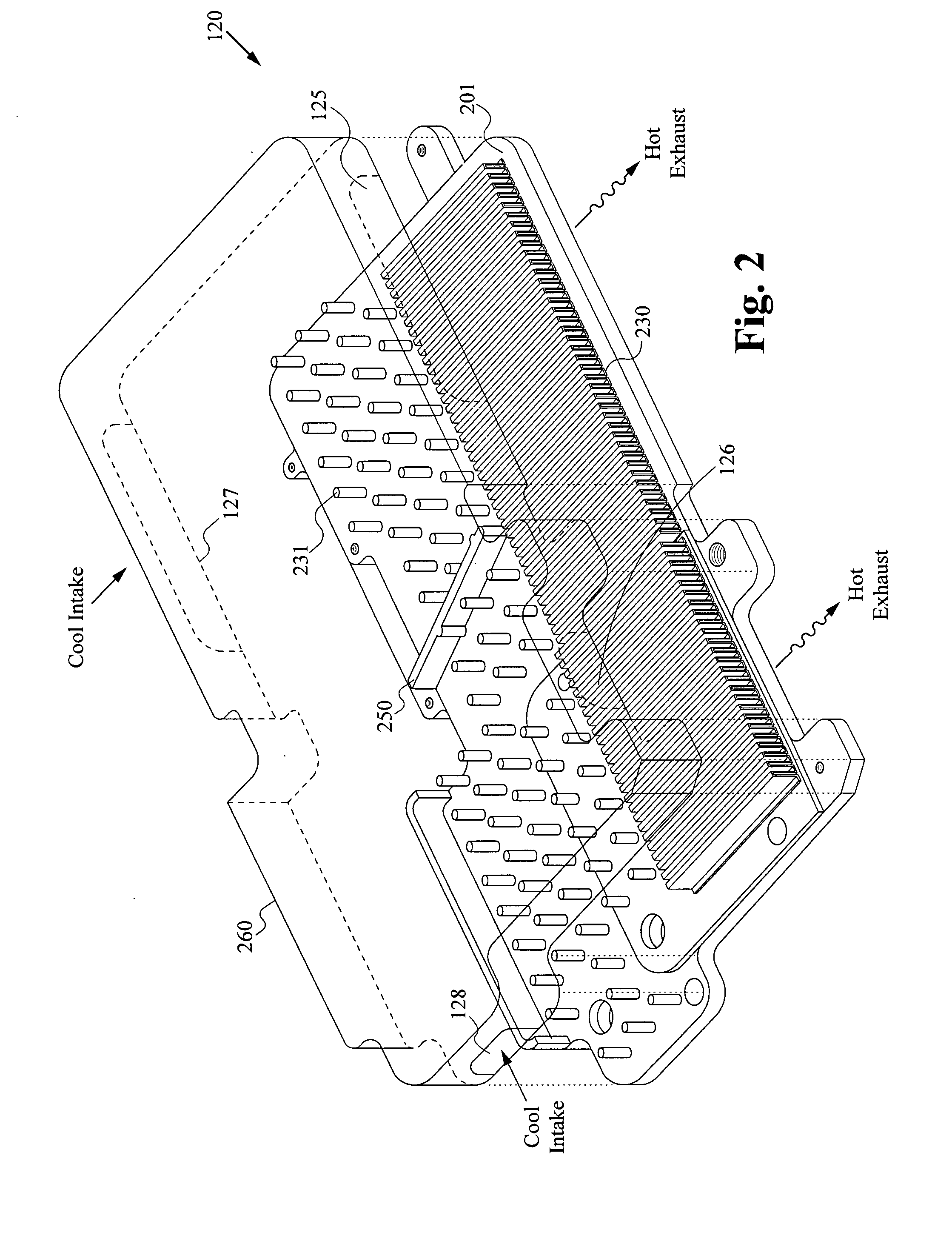Integrated liquid to air conduction module
a liquid-to-air conduction module and integrated technology, applied in the field of heat exchangers, can solve the problems of not meeting the requirements of traditional cooling structures, the current cooling structure of semiconductors is significant for traditional cooling structures, and the heat dissipation requirements of performance processors are very high
- Summary
- Abstract
- Description
- Claims
- Application Information
AI Technical Summary
Benefits of technology
Problems solved by technology
Method used
Image
Examples
first embodiment
[0037]FIG. 1 is a perspective view of a preferred embodiment of an integrated cooling system 100 for cooling a laptop computer according to the present invention. The cooling system 100 includes a cold-plate assembly 130 coupled to a heat-rejector assembly 120, thereby forming an integrated cold-plate heat-rejector assembly. One surface of the heat-rejector assembly 120 is adjacent to the cold-plate assembly 130 and forms a top plate and seals to the cold-plate assembly 130. The integrated cold-plate heat-rejector assembly overlies and thus cools first, second, and third electronic devices 140-142, respectively.
[0038]The heat-rejector assembly 120 includes air vents 125-127, all fluidly coupled to a cooling fan 110. The cold-plate assembly 130 includes an inlet 170 and outlet 180 fluidly coupled to the flow path 315. Coupled to the inlet 170 and outlet 180 is a pump 150. The pump 150, integrated cold-plate 130 heat-rejector 120 assembly, and reservoir 160 thus form a closed loop flu...
second embodiment
[0051]FIG. 4 is a perspective view of an integrated cooling system 400 in accordance with the present invention. The integrated cooling system 400 includes a cold-plate assembly 410, coupled to the heat-rejector assembly 420, a pump 430, and a fan 440. Air-fins 421 are coupled to the heat-rejector assembly 420.
[0052]The cold-plate assembly 410 contains a fluid path and fluid which is pumped though the assembly 420 to distribute the heat generated by the heat source 460. The heat-rejector 420 is sealed to the cold-plate and defines an inner surface of the of the fluid path. A pump 430 is coupled to the fluid path though an inlet 431 and an outlet 432. The heat is conducted to the heat-rejector assembly 420, to the air fins 421, and into the ambient air flow generated by the fan 440. Preferably an enclosure 450 covers the heat-rejector assembly 420 forming an air channel. Attached to one end of the air channel is a fan 440 that either pulls or pushes air through the air fins 421.
[0053...
PUM
 Login to View More
Login to View More Abstract
Description
Claims
Application Information
 Login to View More
Login to View More - R&D
- Intellectual Property
- Life Sciences
- Materials
- Tech Scout
- Unparalleled Data Quality
- Higher Quality Content
- 60% Fewer Hallucinations
Browse by: Latest US Patents, China's latest patents, Technical Efficacy Thesaurus, Application Domain, Technology Topic, Popular Technical Reports.
© 2025 PatSnap. All rights reserved.Legal|Privacy policy|Modern Slavery Act Transparency Statement|Sitemap|About US| Contact US: help@patsnap.com



